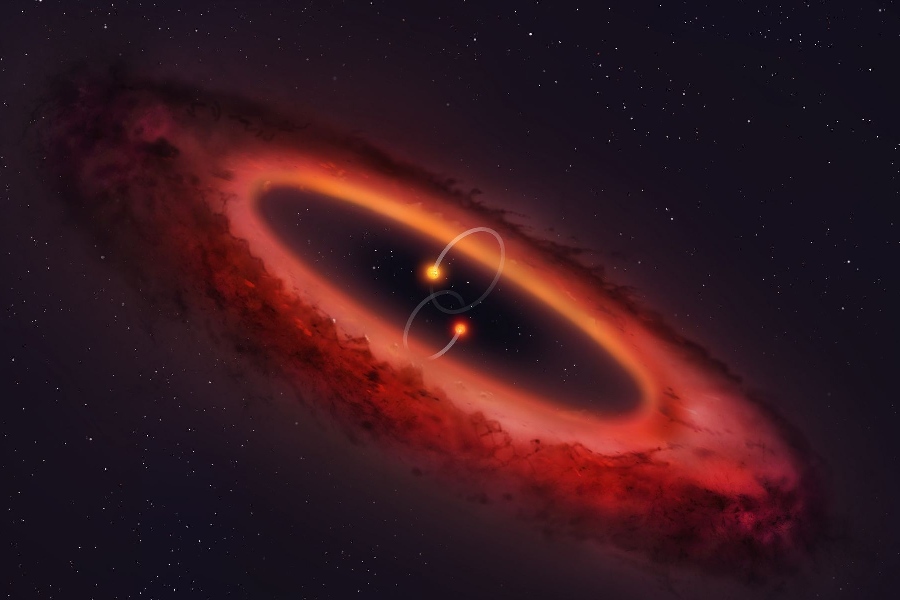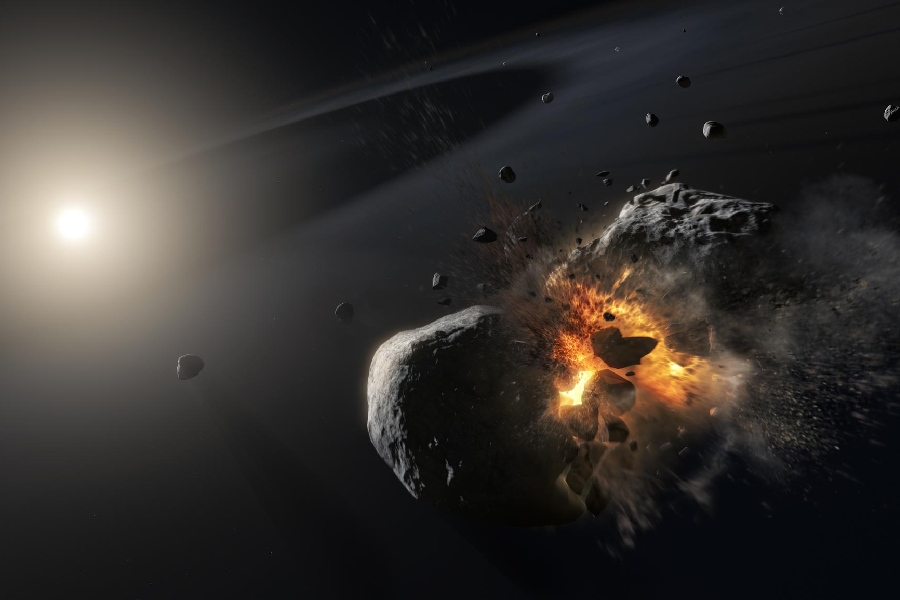For millennia, the vast emptiness between Mars and Jupiter puzzled astronomers. While they mapped planets, a hidden world of millions of rocky bodies – the Asteroid Belt – remained undetected. This mystery led many to wonder: when was the Asteroid Belt discovered?
This article dives into the fascinating story of the Asteroid Belt’s discovery. We will explore the limitations of early observations and the breakthroughs that finally brought this celestial realm into focus.
Read on to discover how and when this landmark cosmic space came into focus.

When Was the Asteroid Belt Discovered?
The Asteroid Belt was discovered in the early 19th century, during the dawn of telescopic observations. Astronomers noticed a region between the orbits of Mars and Jupiter filled with numerous small celestial bodies.
The first asteroid to be discovered was Ceres, found by Italian astronomer Giuseppe Piazzi on January 1, 1801. Following Ceres, more asteroids were discovered in the same region.
History and Discovery of the Asteroid Belt
For centuries, astronomers were intrigued by the vast space between the orbits of Mars and Jupiter. They theorized that there might be an undiscovered planet lurking there.
However, due to technological limitations, they couldn’t provide concrete evidence. In the late 1500s, Johannes Kepler was the first to suggest the possibility of a planet in this area.
The progress in investigating this theory was slow until the 1700s. Early telescopes allowed astronomers to delve deeper into the orbits of Mars and Jupiter, attempting to measure the gap accurately.
Despite their efforts, they lacked the necessary tools to confirm the existence of a hidden planet. Consequently, the concept of an unseen planet persisted, while direct examination of the region remained elusive.
Advances in setting the stage
In the mid-1700s, Titius and Bode analyzed spacing between planets. Their calculation also showed a gap where an undiscovered body should orbit between Mars and Jupiter.
This reinforced the missing planet idea originally posed by Kepler. But lacking optical aids to verify it, the predicted world stayed hidden for decades even as Uranus and Ceres were spotted elsewhere starting in 1781.
Better telescope lenses were necessary before dim objects in space could come into view. The early 19th century saw rapid improvements in optics, preparing the scene for transformations in understanding this realm. So, exactly who discovered the Asteroid Belt?
Piazzi’s “New Planet”
The discovery of a large body between Mars and Jupiter by Giuseppe Piazzi on January 1, 1801, initially seemed to confirm the speculation. But its tiny disk and abnormal orbit soon indicated something much smaller than a typical planet. This marks a key milestone toward revealing Ceres and asteroids.
Piazzi observed Ceres only 24 times in 9 degrees of orbit before disappearing behind the Sun. But this first-ever sighting of an asteroid raised doubts about conventional planet formation ideas. It would take another astronomer to recognize Ceres as the lead example of a whole belt of asteroids.

Early telescopic discoveries
In 1802, astronomer Heinrich Olbers examined Piazzi’s measurements of his new “planet”. Olbers determined it to be much smaller based on its rapid motion and changing brightness.
He then theorized that Piazzi’s find represented one member of potentially many more fast-moving undiscovered rocky objects. These objects were believed to reside in the Mars-Jupiter zone rather than one hidden planet. Olbers presented this revolutionary asteroid concept in a paper later that year.
He proposed that fragments or remnants of a destroyed planet could remain, unable to accrete into one body. Olbers’ ideas explained Piazzi’s odd discovery and resolved the mystery gap. Most fellow astronomers initially resisted his model. But Olbers moved forward anyway, searching for more small worlds.
Cataloging minor planets
Olbers embarked on a search for more asteroids, and in 1807, he discovered and named Vesta. Esteemed astronomer Karl Harding discovered the asteroid Juno in 1804. Additionally, Heinrich Wilhelm Olbers identified the sizable asteroid Pallas in 1802.
These observations confirmed Olbers’ theory about the asteroid belt and validated Ceres as the first observed asteroid. The systematic recording and documentation of sightings significantly increased in the following decades.
By 1890, astronomers had registered 300 more asteroids, with most being found within this concentrated belt. The process of charting asteroid positions and orbits became a formal discipline, although initial challenges led to some losses.
Initially, the four brightest asteroids were the easiest to relocate and track as technological advancements gradually improved. With refined mathematical predictions, astronomers could relocate asteroids, paving the way for the first studies on gravitational perturbations.
Relevance of key asteroids
Early on, astronomers identified Ceres, Pallas, Juno, and Vesta as the largest asteroids, representing a distinct orbital region. This area contains smaller fragments rather than fully formed protoplanets.
As scientists characterized these asteroids and made subsequent discoveries, they began to confirm the presence of a belt of debris situated between Mars and Jupiter. This discovery was a significant milestone in establishing the Asteroid Belt as a predominant feature.
In the late 19th century, studying the largest asteroids provided crucial insights into their compositions through spectroscopy. However, their combined mass fell far short of what would be expected for a planet between Mars and Jupiter.
By tallying thousands of smaller bodies, scientists eventually resolved the origin dilemma: no single destroyed precursor world existed. Instead, the Asteroid Belt consists of remnants from the Solar System’s formation.
Discovery of the Asteroid Belt
As mentioned, in 1801, Italian astronomer Giuseppe Piazzi observed a new celestial object between Mars and Jupiter, which he named Ceres. Soon after, other astronomers found objects in similar orbits, such as Pallas and Vesta. Realizing these were not planets, the concept of an “Asteroid Belt” emerged—a region filled with rocky objects orbiting the Sun.
The discovery led to debates about their origin, whether they were fragments of an exploded planet or leftovers from the Solar System’s formation. Ongoing discoveries and space missions continue to explore these ancient asteroids, shedding light on the early history of our cosmic neighborhood.
Development of Asteroid Belt Theories
Early theories suggested that asteroids might have originated as fragments from a shattered planet or unsuccessful planetary embryos. As more asteroids were identified, two main hypotheses emerged: the disruption hypothesis, proposing an ancient planet’s destruction leading to the asteroid belt, and the planetesimal hypothesis, viewing asteroids as remnants of the primordial disk that birthed planets.
Astronomers such as Max Wolf played significant roles in studying asteroids, discovering hundreds and establishing classification systems. Carl Friedrich Gauss contributed by developing mathematical techniques to predict asteroid orbits, while Johann Encke and Johann Galle made crucial observations that aided theoretical understanding.
In the modern perspective, asteroids are leftover building blocks from the protoplanetary disk surrounding the young Sun. Gravitational interactions in the region between Mars and Jupiter prevented the formation of a single large planet, resulting in the independent objects we now observe in the Asteroid Belt.
Exploration and Study of the Asteroid Belt
Exploring asteroids: Missions and spacecraft
Space agencies have launched missions to explore and study asteroids in the Asteroid Belt. Robotic spacecraft used in these missions have given us crucial information about these ancient celestial bodies’ composition, structure, and origins.
One notable mission, the European Space Agency’s Rosetta mission, initially aimed to study a comet. Along its journey, it unexpectedly encountered and studied two asteroids. This unplanned exploration offered valuable insights into the variety of asteroids found in the belt.
Space mission contributions: Dawn and NEAR Shoemaker
NASA’s NEAR Shoemaker mission achieved a significant milestone by being the inaugural spacecraft to orbit and touch down on an asteroid. It accomplished this feat in 2001 by orbiting the asteroid Eros, capturing intricate images, and collecting data on its surface characteristics, composition, and inner makeup.
These missions have transformed our comprehension of asteroids, unveiling their varied features and intricate geology. Moreover, they’ve provided insights into the potential significance of asteroids in transporting water and organic substances to Earth during its early stages.
Conclusion
When was the Asteroid Belt discovered? The discovery of the Asteroid Belt in the early 19th century marked a significant milestone in our understanding of the Solar System.
Through the diligent work of astronomers like Giuseppe Piazzi and Heinrich Olbers, the hidden realm between Mars and Jupiter was revealed, reshaping our cosmic perspective. Understanding the Asteroid Belt remains pivotal for unraveling the mysteries of our Solar System’s origins and paving the way for future space exploration endeavors.
